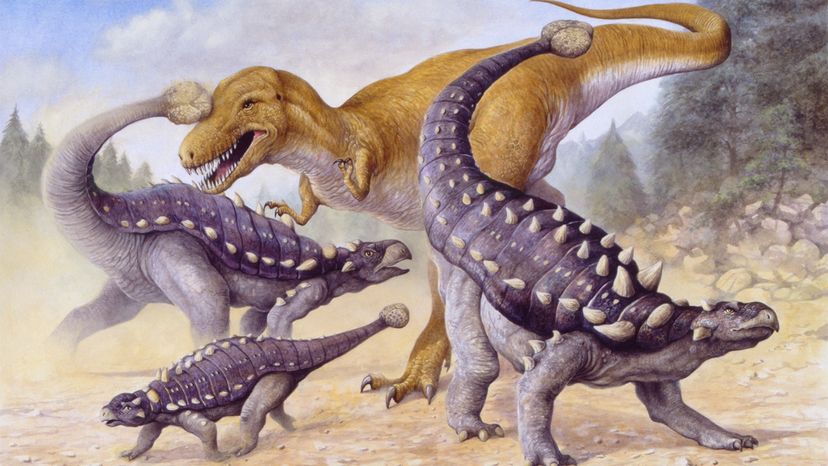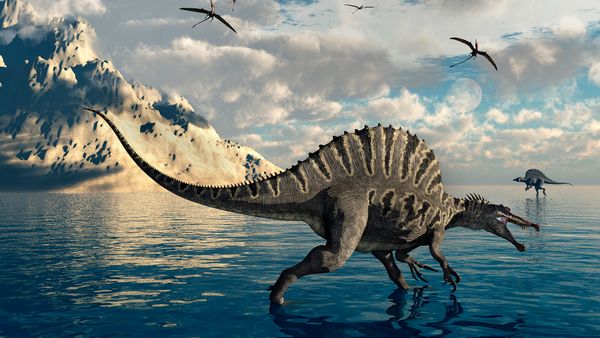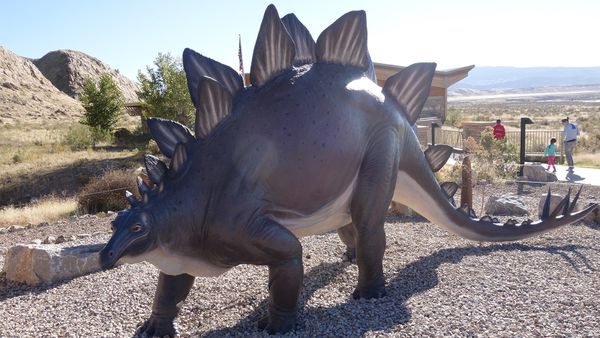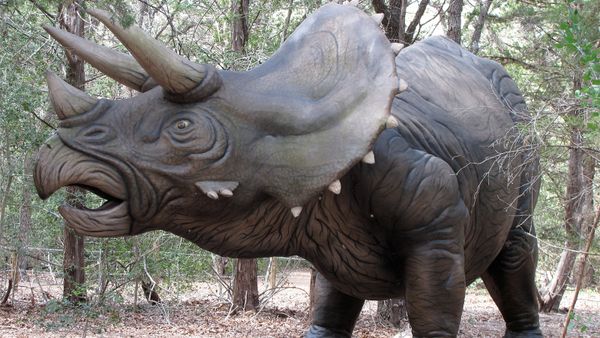And ankylosaurus needed that protection because it spent most of the day eating massive amounts of food, stripping leaves from low-lying plants. "They have small teeth similar to those of present-day plant-eating lizards," Sues says. "An amazing discovery of a nearly perfect ankylosaur skeleton from Alberta [British Columbia, Canada] preserved gut contents that confirmed that ankylosaurs ate plants."
However, Sues shared a startling discovery. "One small-bodied ankylosaur recently discovered in northern China apparently went into lakes and even ate small fish," he says. It's possible that some species were evolving in order to consume animal matter.
Though the first known ankylosaurus remains were discovered by Barnum Brown in the Hell Creek Formation in Montana in 1906, Sues says ankylosaurid dinosaurs have been found in many places throughout the world including Europe, Antarctica, Asia, Australia and North and South America.
"In fact, one of the first dinosaurs ever to be discovered was an Ankylosaur, Hylaeosaurus from southern England, discovered in 1831," he says.



